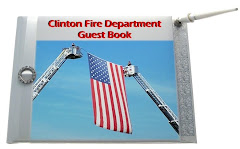In the previous post we got a quick introduction to mutual aid and box alarms. Let’s now take a hypothetical example of a residential fire alarm in the heart of Clinton. The dispatcher will get the call and dispatch the call in the following way. “Stations clear, Box 45-01 Level 1- 45 Fire and Rescue. 45 Fire and Rescue responding to 11 Street Road for an audible fire alarm. Caller stating that the alarm is making a chirping noise, no visible smoke”. In this case it is a basic fire call which will be handled by units from Clinton Fire Department and no mutual aid is needed. In cases where there are many potential victims such as schools and large businesses, mutual aid units will be dispatched even for a Level 1 alarm e.g. smoke or CO detectors.
Let’s look at another example where a homeowner comes home to find their basement filled with smoke. The homeowner calls 911 and the necessary departments are dispatched. “Stations clear, Box 45-01 Level 2 - 45 Fire and Rescue, Engine 46-61, Ladder 14-69, Engine 91-64, 18 Fire (FAST) responding to 11 Street Road for a possible structure fire. Homeowner reporting their basement is filled with smoke and they smell something burning”. In this case the homeowner is getting a full response from our station (2 engines, a tower ladder and a service truck) as well as an engine from Annandale (46) and Quakertown (91), a ladder from High Bridge (14), and a FAST from Lebanon Boro (18). The responding officers have the necessary resources coming into the scene without having to do anything. In addition they can also upgrade the box based on the criteria established for that location.
Mutual aid based on box alarms has revolutionized the way that we all work together. Previous to box alarms an officer would get on scene and then they would call for help. Now we have a mindset where we’d rather get everyone on the road and then cancel them, rather than getting on scene and knowing that your next available ladder is at least 15 minutes away. Additionally with less members available for daytime responses Clinton may only be able to staff 1 Engine initially. With the automatic mutual aid the box alarms provide the officer in charge will still have adequate resources responding.
Let’s look at another example where a homeowner comes home to find their basement filled with smoke. The homeowner calls 911 and the necessary departments are dispatched. “Stations clear, Box 45-01 Level 2 - 45 Fire and Rescue, Engine 46-61, Ladder 14-69, Engine 91-64, 18 Fire (FAST) responding to 11 Street Road for a possible structure fire. Homeowner reporting their basement is filled with smoke and they smell something burning”. In this case the homeowner is getting a full response from our station (2 engines, a tower ladder and a service truck) as well as an engine from Annandale (46) and Quakertown (91), a ladder from High Bridge (14), and a FAST from Lebanon Boro (18). The responding officers have the necessary resources coming into the scene without having to do anything. In addition they can also upgrade the box based on the criteria established for that location.
Mutual aid based on box alarms has revolutionized the way that we all work together. Previous to box alarms an officer would get on scene and then they would call for help. Now we have a mindset where we’d rather get everyone on the road and then cancel them, rather than getting on scene and knowing that your next available ladder is at least 15 minutes away. Additionally with less members available for daytime responses Clinton may only be able to staff 1 Engine initially. With the automatic mutual aid the box alarms provide the officer in charge will still have adequate resources responding.
.






